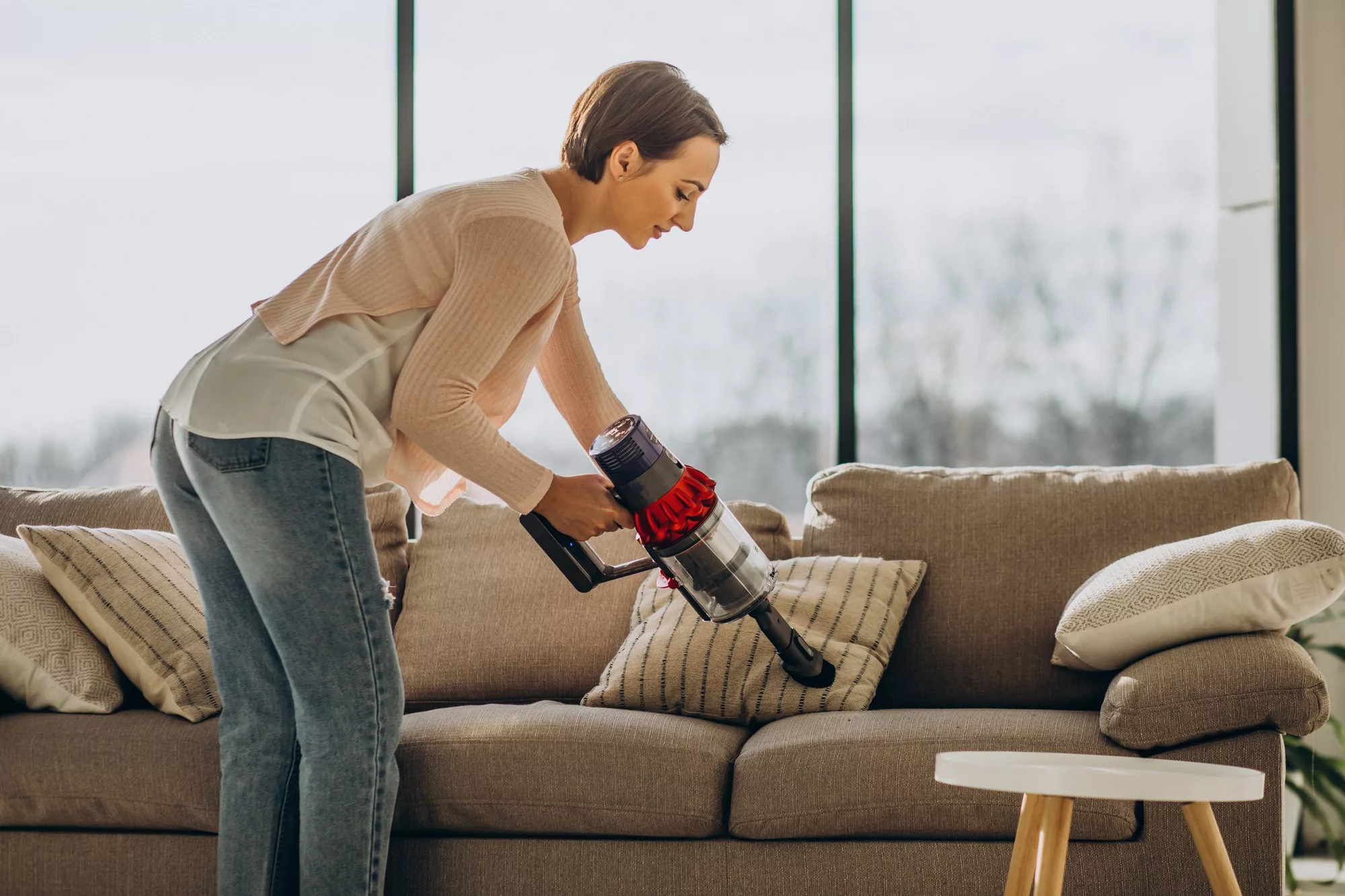
Upholstered furniture adds a touch of luxurious comfort to our living spaces, transforming a house into a home. But, upholstery fabric isn’t as durable as other materials our furniture is often made from, like leather and wood. To maintain its beauty and extend its lifespan, regular care and attention are essential. In this basic guide, we’ll explore effective strategies and practices to care for your upholstered furniture, from routine cleaning to handling spills and preserving the fabric’s integrity.
Vacuum Thoroughly and Regularly: Regular vacuuming is the cornerstone of upholstered furniture care. Use a soft brush attachment to gently remove dust, dirt, and debris from the fabric’s surface. Pay close attention to seams, corners, and crevices where particles tend to accumulate. Frequent vacuuming not only keeps your furniture looking clean but also prevents dirt from becoming embedded in the fabric, ultimately preserving its texture and color.
Read the Manufacturer’s Instructions: Before diving into a cleaning routine, familiarize yourself with the manufacturer’s care instructions for your specific upholstered furniture. Different fabrics and finishes may require unique approaches. The manufacturer’s guidelines can provide valuable insights into recommended cleaning methods, suitable cleaning agents, and any specific precautions to ensure the longevity of your furniture.
Perform Routine Spot Cleaning: Address spills and stains promptly to prevent them from setting into the fabric. Blot the affected area with a clean, absorbent cloth or sponge, working from the outer edges toward the center. Avoid rubbing, as this may spread the stain or damage the fabric fibers. If a stain persists, consult the manufacturer’s guidelines for appropriate cleaning agents and methods, and always perform a patch test in an inconspicuous area before applying any cleaning solution.
Use Upholstery Protectors: Consider applying fabric protectors to your upholstered furniture to create a barrier against spills and stains. These products create an invisible shield that repels liquids and prevents them from penetrating the fabric. Be sure to ensure it’s safe for your fabric, follow the application instructions carefully, and reapply the protector periodically, especially after thorough cleanings, to maintain its effectiveness.
Rotate Cushions and Pillows: Evenly distribute wear and tear on your upholstered furniture by regularly rotating cushions and pillows. This helps prevent uneven compression, maintaining the overall appearance and comfort of the furniture. If possible, flip and rotate reversible cushions. This simple practice extends the life of the upholstery and ensures a consistently inviting and well-maintained look.
Use Professional Cleaning Services: Periodically enlist the services of professional upholstery cleaners to deep clean and refresh your furniture. Professional cleaners have the expertise to identify the most effective cleaning methods for different fabrics, ensuring a thorough and safe cleaning process. Schedule professional cleanings every 12 to 24 months, depending on the furniture’s level of use and exposure to potential stains.
Protect Furniture From Sunlight: Prolonged exposure to sunlight can fade and weaken upholstery fabric. Position your upholstered furniture away from direct sunlight, or use curtains and blinds to block harmful UV rays. If relocation is impractical, consider rotating or rearranging furniture periodically to ensure even exposure. Additionally, investing in UV-protective window treatments can help safeguard upholstery from the damaging effects of the sun.
Perform Some Regular Fluffing and Puffing: If your furniture has loose cushions, regularly fluff and puff them to maintain their shape and resilience. This simple action helps prevent sagging and keeps the cushions looking inviting. Gently pat and shake cushions to redistribute the filling, ensuring a more even and comfortable seating experience.
Avoid Eating on Upholstered Furniture: Establish a rule against eating on upholstered furniture to prevent accidental spills and food stains. Consuming meals at dining tables or in designated eating areas minimizes the risk of crumbs and spills finding their way onto your furniture. If an occasional snack is irresistible, use trays or placemats to contain any potential mess and make cleanup easier.
Utilize Pet-Friendly Practices: If you share your home with pets, take additional measures to protect your upholstered furniture. Use furniture covers or pet-friendly throws to shield against pet hair, scratches, and accidents. Regularly groom and bathe pets to minimize shedding, and consider providing designated pet-friendly furniture to divert their attention from your upholstered pieces.
Consider Professional Restoration: As your upholstered furniture ages, consider professional restoration services to breathe new life into cherished pieces. Professional upholsterers can replace worn-out or damaged fabric, repair sagging cushions, and address structural issues. This investment not only preserves the sentimental and aesthetic value of your furniture but also ensures its continued comfort and functionality.
Caring for upholstered furniture can involve a combination of routine maintenance, proactive measures, and occasional professional attention. By incorporating these strategies into your furniture-care routine, you can not only preserve the beauty and comfort of your upholstered pieces but also extend their lifespan. Whether it’s routine vacuuming, prompt spot cleaning, or professional services, investing time and attention into the care of your upholstered furniture pays off in the long run. Upholstered furniture can endure with the right care, providing you with a comfortable and inviting living space for years to come.

